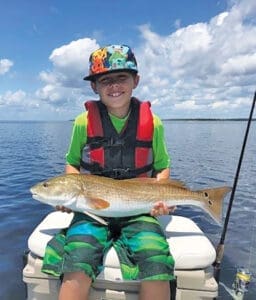 Handle fish as little as possible and only with wet hands. This reduces the removal of fish slime, which protects the fish from infection and aids in swimming.
Handle fish as little as possible and only with wet hands. This reduces the removal of fish slime, which protects the fish from infection and aids in swimming.
Match tackle to the targeted fish to land it quickly and minimize stress on the fish. Large species such as sharks, billfish and tarpon should be brought alongside the boat within 20 minutes of being hooked. If you are consistently landing exhausted fish that require extensive efforts to resuscitate, consider using heavier tackle.
A knotless, rubber-coated landing net is ideal when handling a fish since it supports the fish’s body weight.
Remember, fish swim horizontally! Never hold a fish by its jaw, gills or eyes.
Large fish, such as tarpon, should not be boated or dragged over the gunwale of the boat because this could injure the internal organs of the fish.
When holding a fish that has teeth, use a gripping tool to support the front of the fish, and use the other hand under the belly to evenly support the fish’s weight.
Never hold on to or tow a fish not allowed to be harvested to a different location to weigh or measure it.
Carefully remove the hook if possible. If the fish is gut-hooked or especially large or agitated, cut the line as close to the hook as you can while the fish is still in the water.
Reduce handling by using a dehooking tool. Dehooking tools allow anglers to quickly release their catch while minimizing injuries and handling time.
Always release your fish head first into the water. This allows water to be forced through the mouth and over the gills, essentially giving it a “breath of fresh air.”
Learn more at MyFWC.com.





























































